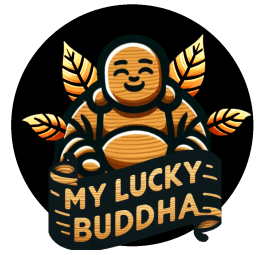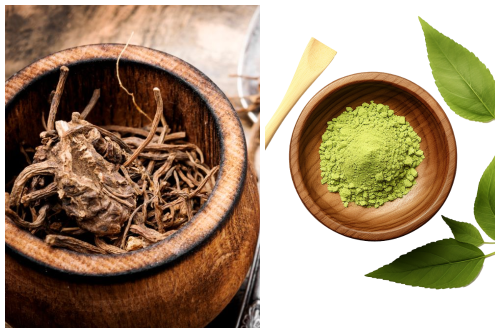What is Kava
Since the early 2000s, people have increasingly turned to natural alternatives for relaxation, energy, and overall well-being. Among the most popular options are kava and kratom.
These plant-based remedies, rooted in rich cultural traditions, offer unique experiences for those looking to enhance their daily lives. This article will dive into the history, biology, effects, and uses of both kava and kratom, helping you decide which might be right for you.
Historical and Cultural Background
The Origins of Kava
Kava, or Piper methysticum, has a long history in the South Pacific. For over 3,000 years, island communities have used kava in social, religious, and medicinal ceremonies.
Traditionally, they chewed or ground kava roots into a paste, mixed it with water, and consumed it in groups. This practice symbolized peace and unity, bringing people together in relaxation and connection.
Kratom’s Role in Southeast Asia
Kratom, derived from the leaves of the Mitragyna speciosa tree, has been integral to Southeast Asian culture for centuries. Indigenous communities in Thailand and Malaysia used kratom for various purposes, from easing physical labor to enhancing daily routines.
They often chewed fresh kratom leaves or brewed them into teas, experiencing both stimulating and calming effects depending on the strain.
Ceremonial Uses: Kava and Kratom
Kava in the South Pacific

Kava holds a significant place in South Pacific ceremonies. Island cultures center rituals, such as weddings and peace agreements, around kava. Revered as a sacred drink, kava fosters spiritual connection and social harmony.
Kratom in Southeast Asia
In contrast, kratom was traditionally used in daily life rather than formal ceremonies. Farmers and laborers chewed kratom leaves to combat fatigue during long work hours. Kratom also played a role in traditional medicine for the indigenous people of Indonesian descent.
Kava vs. Kratom: Differences in Plant Biology
The Kava Plant’s Unique Composition
Kava comes from the root of the Piper methysticum plant. Its primary active compounds, kavalactones, are responsible for its calming and soothing effects. These compounds influence neurotransmitters in the brain, particularly GABA, which is linked to feelings of relaxation.
Kratom: The Power of Mitragyna Speciosa
Kratom comes from the leaves of the Mitragyna speciosa tree, a relative of the coffee plant. The active compounds in kratom, alkaloids like mitragynine and 7-hydroxymitragynine, interact with the body’s receptors. This interaction can lead to effects ranging from stimulation to relaxation, depending on the strain and dosage.
Comparing Alkaloid Profiles: Kava vs. Kratom
Kava and kratom offer distinct experiences due to their different chemical compositions. Kava’s kavalactones provide a more uniform, relaxing effect. In contrast, kratom’s alkaloids deliver a broad spectrum of effects, from a mild energy boost at lower doses to soothing relaxation at higher doses.
Effects and Uses of Kava and Kratom
Kava: The Calming Companion
Many people use kava as a natural way to unwind and reduce stress. Its effects are subtle, offering relaxation without impairing mental clarity. This makes kava a popular choice for those seeking to relax while maintaining focus.
Kratom: The Versatile Ally
Kratom’s effects vary widely depending on the strain and dosage.
White vein strains are stimulating, boosting energy and focus. Red vein strains, on the other hand, are known for their relaxing effects. Green vein kratom offers a balance between stimulation and relaxation, making it versatile for different needs.
Combining Kava and Kratom: What to Expect
Some users combine kava and kratom to create a balanced experience. This combination can potentially offer the best of both worlds—kava’s calming effects and kratom’s energy boost or relaxation, depending on the strain. However, caution is essential, as both affect the central nervous system and may interact unpredictably.
Consumption Methods
Traditional and Modern Ways to Enjoy Kava
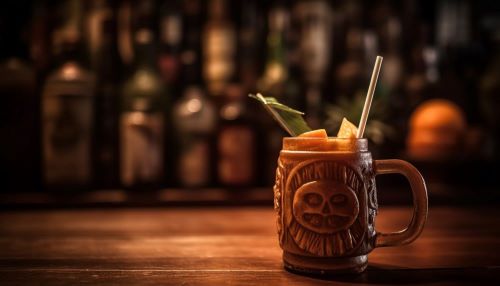
Traditionally, kava is consumed as a drink made from ground root mixed with water. Today, you can find kava in powders, capsules, and tinctures.
Kava bars have emerged, offering kava beverages as an alcohol alternative, promoting social interactions without the after effects of alcohol.
Kratom Consumption: From Leaves to Extracts
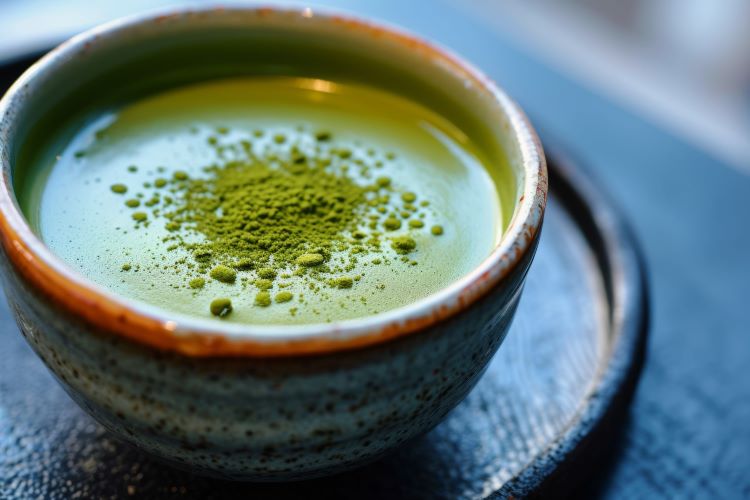
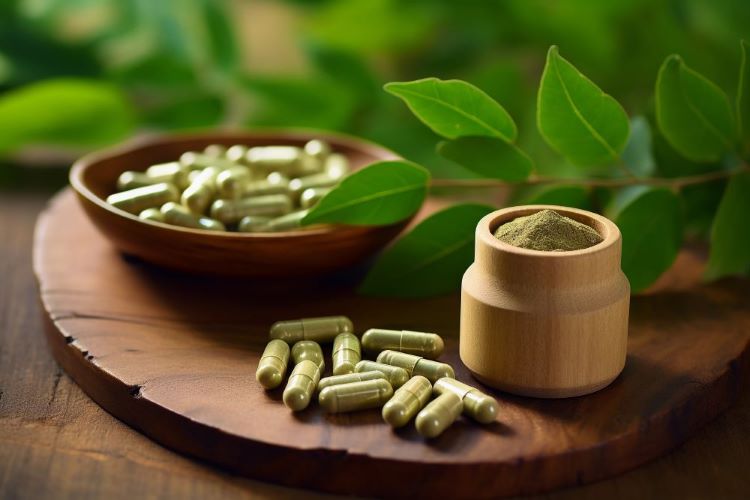
Kratom can be consumed in various ways. While fresh leaves were traditionally chewed, kratom is now commonly available in powders, capsules, and teas. Some prefer kratom extracts, which provide a stronger effect in smaller doses.
Like kava, kratom’s versatility in consumption methods has contributed to its growing popularity.
Kava-Infused Beverages and Kratom Extracts
Recently, innovative consumption methods have emerged for both kava and kratom. Kava-infused beverages are now available in many health food stores and online, offering a convenient way to enjoy kava’s effects.
Similarly, kratom extracts and shots have gained popularity for their potency and ease of use, reflecting the increasing mainstream acceptance of these natural remedies.
Safety, Side Effects, and Legal Status
Kava: Safety and Potential Side Effects
Kava is generally safe when consumed responsibly, but it’s essential to be aware of potential side effects. Some users may experience mild discomfort, headaches, or drowsiness.
Excessive, long-term use of kava has been linked to liver issues, so moderation is crucial. Kava is legal in most countries, though some have imposed restrictions due to health concerns.
Kratom: A More Complex Safety Profile
Kratom’s safety profile is more complex due to its broad effects and potential for misuse. While many people use kratom safely, high doses can lead to risks, including dependency and other adverse effects including deaths and overdoses.
Kratom’s legal status varies widely—some countries and U.S. states have banned it, while others allow its sale and use.
Cultural Significance: A Deeper Dive into Kava and Kratom
Kava: A Drink of Peace and Community
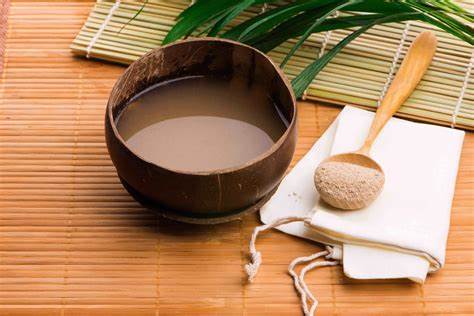
In the South Pacific, kava is more than just a drink; it’s a cultural cornerstone. Preparing and consuming kava is often a communal activity that fosters social bonds and reinforces cultural identity. Kava ceremonies are deeply symbolic, marking significant life events or establishing peace between communities.
Kratom: A Traditional Remedy for Modern Times
Kratom’s cultural significance in Southeast Asia lies in its role as a traditional remedy. For generations, rural communities have used it to cope with physical labor and treat common ailments. Today, kratom remains a vital part of life in many Southeast Asian regions, even as it gains popularity in the West.
User Experience: How Kava and Kratom Are Perceived
Kava: A Gentle Path to Relaxation
Many users describe kava as a gentle way to unwind. The effects are often compared to those of a mild sedative, offering calm without heavy sedation. Kava is particularly popular among those who want to relax without relying on stronger substances.
Kratom: A Versatile Experience
Kratom’s user experience varies widely depending on the strain and dose. Lower doses, especially of white vein strains, can increase energy and focus. Higher doses, particularly of red vein strains, often result in relaxation and a sense of well-being. This versatility makes kratom appealing to a broad audience.
Comparison of Effects: Kava vs. Kratom
Similarities and Differences in Effects
Both kava and kratom offer natural alternatives for relaxation and energy, but their effects differ significantly. Kava provides consistent relaxation, while kratom offers a broader range of effects, from stimulation to sedation. This versatility makes kratom more complex to use effectively.
Kava vs Kratom Feeling: A Comparison
Kava’s Effects
Kava offers a soothing calm without heavy sedation. Many describe its effects as a warm, mellow wave of relaxation. This sensation makes it perfect for unwinding after a stressful day or socializing in a clear-headed state. Unlike stronger substances, kava helps you relax while keeping your mind focused and alert. You stay calm, but your cognitive function remains sharp, which makes it ideal for situations where you need to relax but stay engaged.
Kratom’s Effects
Kratom’s effects vary greatly based on the strain and dosage. Lower doses, especially from white vein kratom, provide a mild stimulant effect, enhancing focus and energy. Higher doses, or red vein strains, create a deeper sense of relaxation, similar to unwinding after a long day. Green vein kratom offers a middle ground, combining both stimulation and relaxation, making it adaptable for different needs. Whether you need energy or relaxation, kratom offers flexibility to match your mood.
Social Use: Kratom and Kava as Alternatives to Alcohol
Both Kratom and Kava have found niches as alternatives to alcohol in social settings. Kava bars offer a relaxed environment where people can socialize without alcohol’s intoxicating effects.
Similarly, kratom cafes provide a space to enjoy kratom in a social setting, reflecting a growing trend toward natural, plant-based alternatives for relaxation and social interaction.
Social and Cultural Impacts
Kava Bars: A Growing Trend
The rise of kava bars worldwide demonstrates the growing popularity of this traditional drink. These bars offer a unique social experience where people can enjoy kava’s calming effects in a communal setting. Kava bars are particularly popular among those who seek social benefits without alcohol’s negative effects.
Kratom Cafes: A New Social Space
Kratom cafes are a newer phenomenon but are quickly gaining traction. These cafes provide a space for people to explore kratom’s effects in a controlled, social environment. Like kava bars, kratom cafes cater to those looking for a natural alternative to alcohol.
Which Is Right for You?
Deciding Between Kava and Kratom
Choosing between kava and kratom depends on your needs and preferences. If you want a natural way to relax, kava may be the better choice. Its effects are consistent and gentle, ideal for unwinding without losing mental clarity.
If you need an energy boost, focus, or a broader range of effects, kratom offers more versatility. However, choosing the right strain and dosage is essential to achieve your desired outcome.
Conclusion
Kava and kratom are remarkable plants offering natural alternatives for relaxation, energy, and well-being. Each has unique properties rooted in rich cultural traditions and offers diverse experiences for modern users.
Whether you’re drawn to kava’s calming effects or kratom’s versatile nature, it’s crucial to approach both with respect and mindfulness. By understanding the differences between kava and kratom, you can make an informed choice that aligns with your needs when you purchase either awesome botanical.
A Simple Quiz: Kava or Kratom?
- Do you prefer to relax without feeling drowsy?
- Yes: Kava might be your best bet.
- No: Consider trying kratom, especially a green or red strain.
- Do you need an energy boost or help with focus?
- Yes: White vein kratom could be ideal.
- No: Kava or a red strain of kratom might suit you better.
- Do you enjoy experimenting with natural remedies?
- Yes: Try both kava and kratom to see which works best for you.
- No: Stick with kava for a more predictable experience.
Disclaimer: These product’s are not intended to diagnose, treat, cure or prevent any disease or condition. Not intended for use by pregnant or nursing women. Not to be used by anyone on prescription medication or alcohol. These products should not be used by anyone with medical conditions. Not for sale to anyone under age 18 or 21 where applicable. Kratom use may lead to addiction that can cause dependency issues. Please speak to a physician before using kratom, kava or any botanical products. The FDA has not approved kratom or kava as a dietary supplement. These statements have not been evaluated by the United States Food and Drug Administration.
